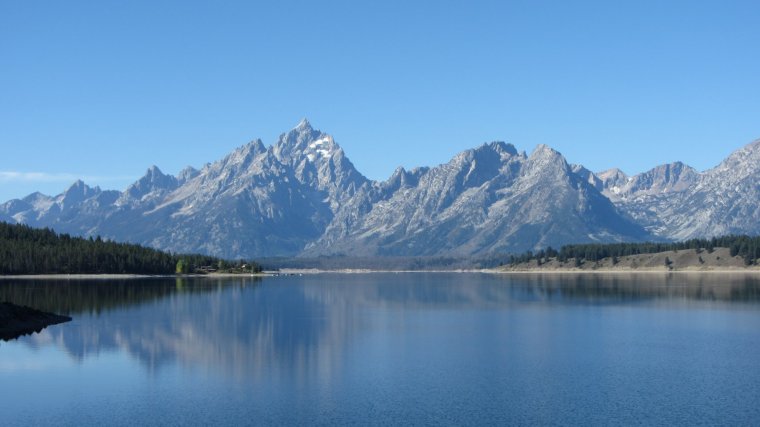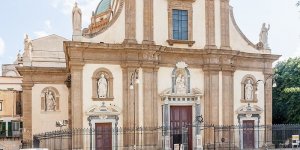| Published in Attractions / Places of Interest |
Yellowstone National Park

Lower Yellowstone River Falls seen from South Rim Trail.
Yellowstone was established by the U.S. Congress and signed into law by President Ulysses S. Grant on March 1, 1872 and also became one of the first biosphere reserves about 100 years later. The area is part of the most seismically active region of the Rocky Mountains and lies on a volcanic ‘hot spot’.
Native Americans have lived in the Yellowstone region for at least 11,000 years. There are 26 current tribes that have historic connections to the lands and resources now found within Yellowstone National Park.
Yellowstone National Park spans an area of 8,983 km2, comprising lakes, canyons, rivers and mountain ranges. Yellowstone Lake is one of the largest high-elevation lakes in North America and is centered over the Yellowstone Caldera, the largest supervolcano on the continent.
The caldera is considered a dormant volcano. It has erupted with tremendous force several times in the last two million years. Half of the world's geysers and hydrothermal features are in Yellowstone, fueled by this ongoing volcanism. Lava flows and rocks from volcanic eruptions cover most of the land area of Yellowstone.
The park is the centerpiece of the Greater Yellowstone Ecosystem, the largest remaining nearly-intact ecosystem in the Earth's northern temperate zone. In 1978, Yellowstone was named a UNESCO World Heritage Site.
When to visit
The best times to visit Yellowstone National Park are from April to May and between September and October. These shoulder months offer mild weather and fewer crowds. July and August are the most popular months to visit
Yellowstone National Park Lodges operates nine lodges (hotel- and cabin-style) in the park with more than 2,000 rooms. All are open from late spring through fall, but only Old Faithful Snow Lodge and Mammoth Hot Springs Hotel are open in the winter.
There are 12 campgrounds with over 2,000 sites and Yellowstone National Park Lodges takes reservations for five of these campgrounds; the rest are first-come, first-served.
What to do around Yellowstone National Park
• Explore Thermal Basins. Topping the list of geologic wonders are hydrothermal features: hot springs, mudpots, fumaroles, and geysers. Well over 10,000 different hydrothermal features have been estimated to be active within the park.
Over half of the world's active geysers are found here. In 2011, it was determined that 1,283 geysers have been recorded as erupting in Yellowstone. The rest of the world's geysers combined number less than 500.
• Hike a Trail. The park has more than 1,449 km of hiking trails, and is primarily managed as wilderness. Day hiking does not require a permit. When planning a hike, remember that many of Yellowstone’s trails are more than 2133 m above sea level. Most areas retain snow until late May or early June, and some (especially mountain passes) are snow-covered until late July.
Also, many routes require fording rivers that can be 7 m wide, 1 m to 2 m deep, extremely cold, and swiftly running during our late spring runoff. All of Yellowstone is bear habitat and it is highly recommended to carry bear spray, a non-lethal deterrent for traveling safely.
• Watch Wildlife. Popular destinations for watching some of the park's large mammals are:
— Fishing Bridge: Grizzly bears
— Hayden Valley: Bison, black bears, elk, grizzly bears, wolves
— Lamar Valley: Bison, black bears, bighorn sheep, elk, grizzly bears, mule deer, pronghorn, wolves
— Mammoth Hot Springs: Bison, black bears, elk, mule deer
• Photography. Most popular spots to capture amazing pictures are Grand Prismatic Spring, Lower Falls of the Yellowstone River, Old Faithful, Lamar Valley for wildlife, Upper Geyser Basin (for erupting geysers). Due low light pollution, on clear nights the Milky Way is visible over Yellowstone from April through October. After dark always carry bear spray.
Yellowstone National Park in Pictures

Lower Yellowstone River Falls with an impressive 94 m drop

Lower Yellowstone River Falls seen from Artist Point.

Lake Yellowstone

Old Faithful Geyser

The Grand Prismatic Spring is the largest hot spring in the United States, and the third largest in the world, after Frying Pan Lake in New Zealand and Boiling Lake in Dominica. It is located in the Midway Geyser Basin. The spring is approximately 110 m in diameter and 50 m deep. The spring discharges an estimated 2,100 Liters of 70 °C water per minute.


The Yellowstone Park bison herd was estimated in 2015 to be 4,900.

Stevenson Island on Lake Yellowstone

Teton Range reflecting on Jackson Lake

Jackson Lake
DANIEL ŞTEFĂNIŢĂ
YOU MAY ALSO LIKE





 If you own or manage a travel-related business such as a hotel, a bed-and-breakfast, a restaurant, a pub or a cafeteria, you can create a web page for your business for free on Titi Tudorancea Travel Info. » |
